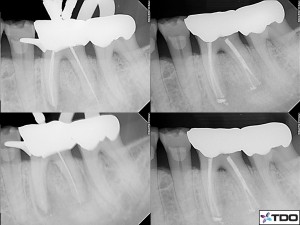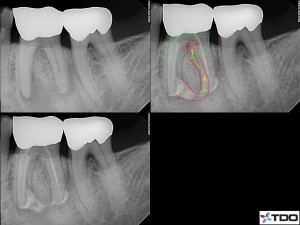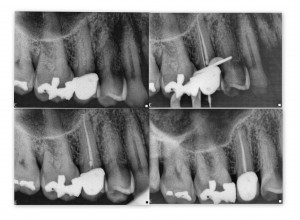Prior to accessing a tooth, one of the first things I try to do is create a mental image of what I believe the internal anatomy to be. This is based on preoperative, perioperative and postoperative radiographs, CEJ tracing, the visual anatomy of the pulp under microscopic inspection, as well as experience and feel.
But teeth and nature are more creative than I can ever hope to be. One of the most common problems in endodontic treatment is the presence of deep splits in canals.
Case #1:
Tooth #19
Necrotic pulp
Acute Apical Abscess
Initial treatment started, medicated with calcium hydroxide.

At the second visit, after extending my access slightly to remove the pressure of the axial walls on the handfiles, it became apparent that the head of the file was protruding to the lingual. This was a clue that while there was only one distal orifice, there was in fact another branch to the lingual(so the head of the file placed in that canal would protrude to the facial).
Case #2:
Tooth #4
Necrotic pulp
Symptomatic Apical Periodontitis
Treatment started, pulpal and radicular anatomy was suggestive of a second canal, but I was unable to locate visually. After cleaning and shaping the case, it was filled via warm vertical condensation…and the presence of the suspected second canal was revealed. We were able to localize it radiographically, then complete the case satisfactorily.
While we will never be able to find and treat every apical ramification present, we sure can have fun trying!

